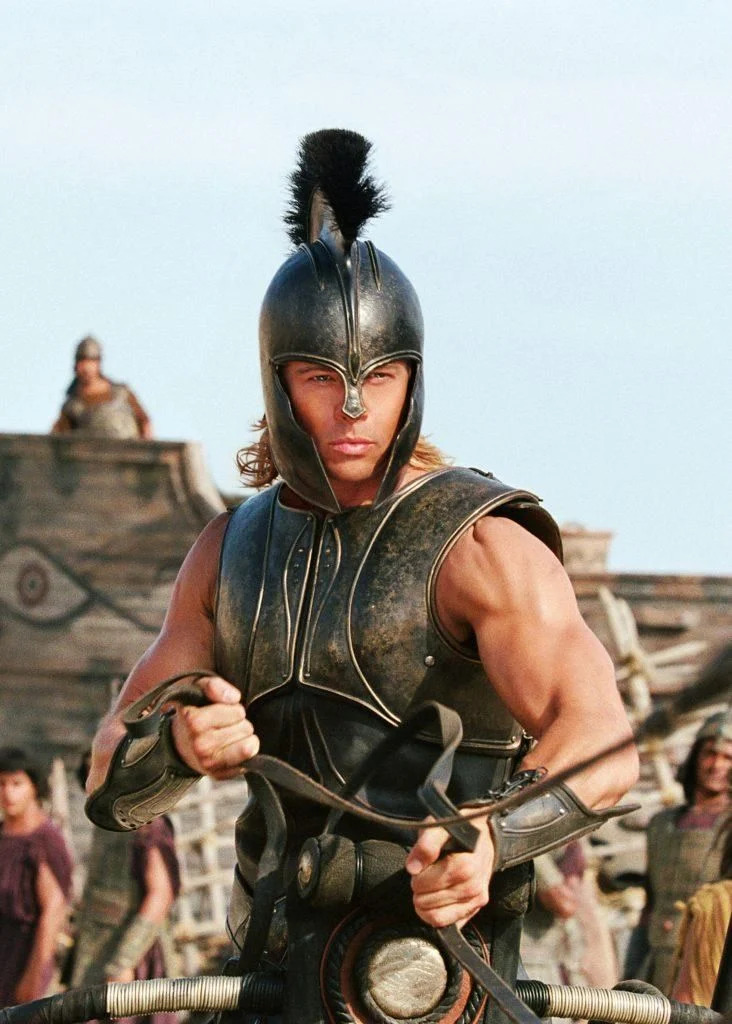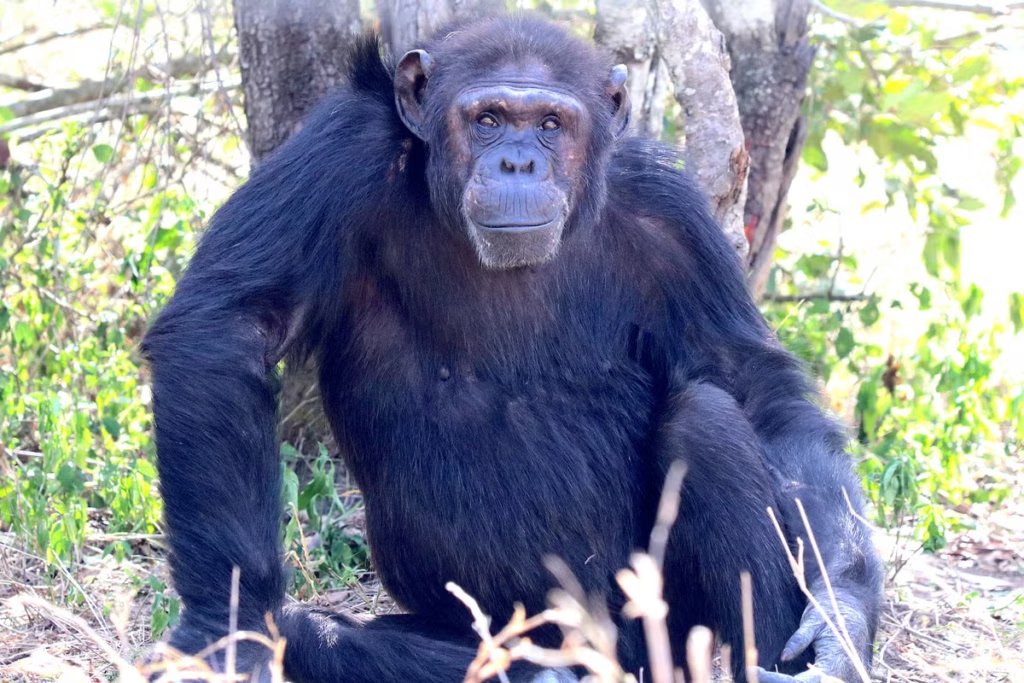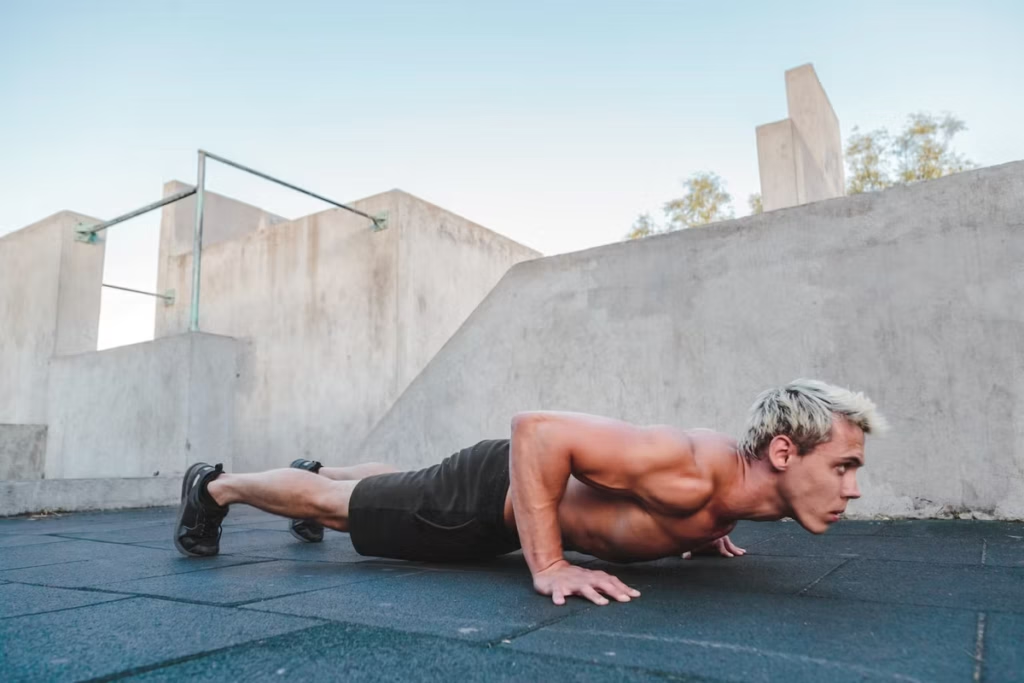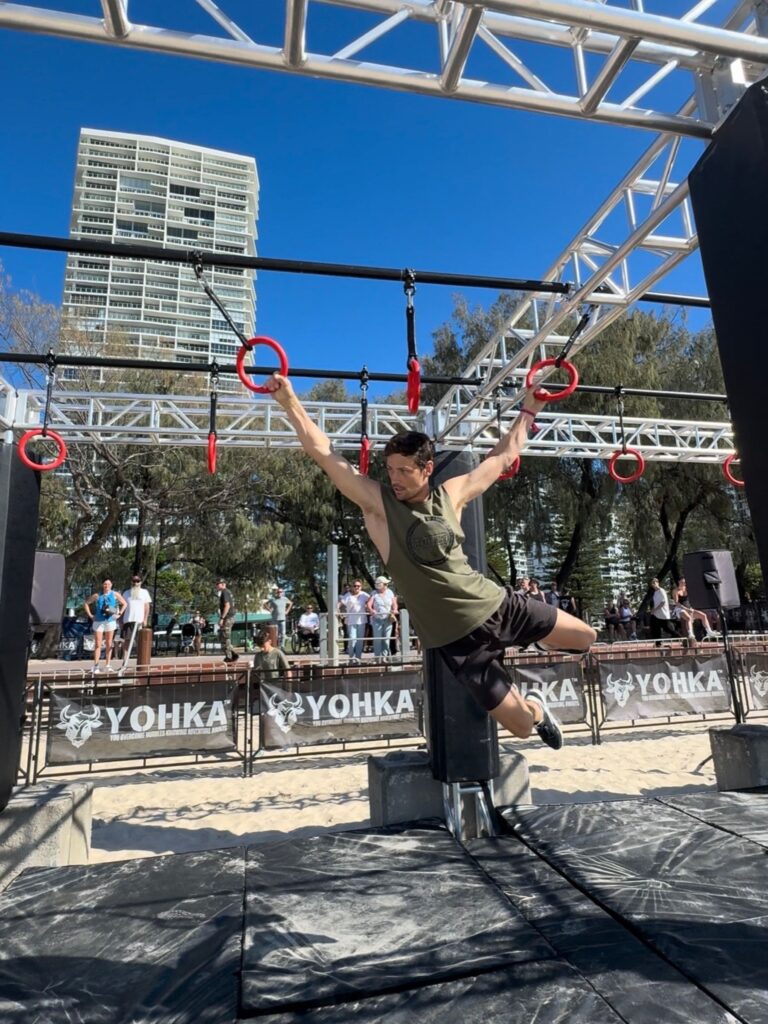Photography: Frank Fontanilla (Da Rulk). Heath Helgert (Zerra). Elijah Gutierrez (Nate). Nikki Smith (Manoah). Roddy Scott (Tom).
“Functional” anything sounds boring – we get it. But in fitness, functional is one of the most exciting adjectives out there. It’s a catch-all word to describe the moves and exercises that prep your body for real-life activities. The pandemic forced people away from gyms and led to a surge in outdoor exercise.
We quickly realised that our workouts hadn’t exactly prepared us for wild environments. That extra muscle we’d built in the gym only weighed us down on trail runs and hikes. We rolled ankles and injured knees because we’d trained only on perfect gym surfaces and lacked the right combination of mobility and stability. The 22°C indoor environment hadn’t readied us for temperature swings, the elements, and the general unpredictability of the outdoors.
It’s time to make your fitness truly functional again by lifting heavy awkward objects, climbing and crawling and jumping more, redlining your cardio, and engaging in other total-body sweat shenanigans. Nobody knows and appreciates this more than these five people – the World’s Strongest Man, an ice climber with his eyes set on Everest, a UFC legend, an animal-movement specialist and a backcountry survivalist – who each define one of the superpowers at the heart of the New Functional Fitness. Master their lessons in strength, mobility, stamina, stability and grit and you’ll have fun getting in the best shape of your life.

Strength: Tom Stoltman
Think you’re strong enough to lift unbalanced loads and bigass rocks with the 2021 World’s Strongest Man? Think again.
Tom Stoltman has seen it happen over and over again. The 185kg strongman, a co-owner of Stoltman Strength Centre in Invergordon, Scotland, will watch some gym bro walk into his facility and instantly expect to lift a 90kg Atlas stone. The guy might talk up how he deadlifts 135kg and bench-presses 100kg umpteen-million times.
Then he’ll grab at the Atlas stone – essentially an oversized, rounded piece of rock – and barely get it to budge. “Many people will come into our gym and think that because they can easily deadlift 200 pounds (90kg), they can lift a 200-pound Atlas stone,” says Stoltman. “It’s so much harder and weirder than people think.”
Most real-world lifts are harder than you think, even if you’ve spent years and years honing your strength and power in the gym. Gym loads are almost always perfectly symmetrical and balanced. But pumping all that refined iron doesn’t necessarily teach your spine to account for the randomness of picking up a FedEx package in real life, or holding a flat-screen TV steady against the wall so a friend can mount it.
Handling unbalanced loads is Stoltman’s specialty. Last year, the 27-year-old, who stands 203cm, set the world record for Atlas-stone lifting over a bar, picking up a 285kg version. He’s been training with oddly shaped weights almost exclusively for the past decade, ever since he started strongman training at 17. “When you go into a normal gym, you see people lifting barbells and dumbbells, and it’s quite boring,” he says. Strongmen are “superhuman. Flipping cars, lifting logs, lifting Atlas stones – that’s what I wanted to do.”
And sure, it might look like he’s destroying his spine whenever he rounds his back (a longtime gym no-no!) to reach down and pick up another massive stone, but the exact opposite is actually taking place. By training with Atlas stones and other strange weights, like sandbags and kegs, Stoltman is teaching his back to stay tight and strong no matter the situation. A recent study in The Journal of Strength and Conditioning Research found that, because Atlas-stone lifts often require bending the back to scoop a load directly from the floor, the strongmen in the study were
able to move weights more efficiently and the body position of the lift demanded that they lock down their entire torso, which protected their spine.
It’s a form of total-body strength that’s applicable to the challenges of your everyday life. And for Stoltman, strongman training has had other benefits, too. It hasn’t just transformed him into one of the world’s most massive humans; it’s also calmed his mind. Stoltman was diagnosed with autism as a youngster, he says, and like many people with the neurodevelopmental disorder, he struggled with social interaction.
But the regimented, focused training necessary to compete as a strongman has helped him manage his autism. Walk into the gym to do biceps curls and your mind can
drift. But when Stoltman has to lift the back end of a Jeep, he must calmly work through a prelift routine and can’t miss a step. “The positive is that autism makes you OCD, and you need a routine,” he says. “Strongman is my routine. I write everything down. And once I get winning World’s Strongest Man in my head, it’s like tunnel vision.”
Stoltman claimed the World’s Strongest Man title last year. And he’s always ready to help you move a piano, too.
Get Strong Like Stoltman
No giant Atlas stones in your backyard?
Don’t want to bench-press your car? No problem. Start with the most classic of strongman events, the farmer’s walk, a Stoltman favourite. It’s also been proven effective: researchers in Canada discovered that strongman carries may help improve performance on regular gym-based lifts.
Add one twist to the strongman formula, though: unbalance the load. Instead of using your favourite pair of heavy kettlebells or dumbbells, hold the heaviest weight you
can lift in one hand – and a weight 10kg lighter in the other.
Stand holding both weights at your sides and tighten your abs, working to keep your hips and shoulders square despite the weight difference. Then walk 30 steps. Switch hands and walk 30 more steps. Do 3 to 4 sets. Make sure to go as heavy as you possibly can each set, aiming to carry your bodyweight – for example, if you weigh 80kg, hold 50kg in one hand, 30 in the other.
Get an Edge
The imbalanced bells won’t just challenge your strength; they’ll challenge your core’s ability to stabilise as you walk. Your shoulders will naturally tip toward the side holding more weight; offset this by squeezing your oblique and shoulder blade on the opposite side.

Mobility: Manoah Ainuu
How this climber with his eyes on Everest finally blended total-body mobility with his mountain-ready muscle.
Indoors in the gym, outdoors on the mountain, or even at home, contorting yourself to crawl under a bed to retrieve a toy, mobility matters. Not sure what “mobility” is? It’s your joints’ ability to be both flexible and stable at once – and it’s a quality that allows you to stay strong no matter how you twist and turn. Without it, everything from catching a football to sitting cross-legged becomes a challenge.
Manoah Ainuu, 26, understands this struggle. A former football player, he took up climbing after moving to Bozeman, Montana. The sport agreed with his long, lanky frame. But at the start, he’d climb for days on end without loosening his wrists and ankles. He was soon battling elbow tendinitis.
Ainuu could muscle himself up a wall, but he’d wear himself out more quickly than his less muscular peers. Climbers often rely on a technique called “stemming”, which has them splay their legs wide, essentially standing against the wall, giving their upper-body muscles a break. Ainuu could barely do this. “I would pretty much have to pull my groin and hips to get into the stemming position,” he says.
His fix was a combination of rest and mobility training. Every three climbing days, he took one rest day. And a few times a week, he took a yoga class. Moves like downward dog loosened his hamstrings and postures like the chair pose relaxed his calves and quads. Soon he could stem. “Being limber is definitely ideal when climbing,” Ainuu says.
Yes, oversized arms and legs help CrossFitters move big weight, but that muscle does little good during tasks like climbing, which requires you to move quickly, not just be strong. Ainuu arrived in Bozeman weighing 80kg; he’s down to 72 now. “I didn’t necessarily get weaker,” he says. “But my endurance definitely went up.”
That pound-for-pound strength will aid Ainuu in his next endeavour: this month, as part of the Full Circle Everest Expedition, he’ll be one of 10 climbers who hope to be the first all-Black team to summit Everest. To train, he’s been pushing for even more lightweight strength – loading up
a backpack, hiking and searching for new pitches to climb. His goal: gain strength without excess muscle. And keep his mobility gains, too.
Master mobility like Ainuu
Battle the wall squat, which demands knee, ankle and hip stability and flexibility. Stand facing a wall, feet slightly wider than shoulder width, toes a 5cm from the wall. Place your palms against the wall, hands far apart. Squat down as low as possible, aiming to let your hamstrings touch your calves. Stand up. Try the move once a week, aiming to improve your performance each time.
Get an Edge
The wall-facing squat challenges your spine’s ability to arch, as well as your shoulder and hip mobility.
To address your hips, do 1 minute of Spiderman lunges daily: start in push-up position, shift your right foot to beside your right arm, then reach your right arm to the ceiling. Repeat on the other side. To improve shoulder and spine mobility, do 1 minute of Superman holds per day.

Stamina: Nate Diaz
All your athleticism is nothing without the aerobic capacity to sustain it – and one UFC legend serves as proof.
Weight-room conversations often focus on muscle and strength, but stamina is the true difference maker. It’s your secret weapon in everything from rec-league basketball games to intense AMRAP workouts. Nate Diaz has understood this for years, which is why his UFC training has long defied convention. A championship UFC bout is five 5-minute rounds of all-out effort – striking, grappling and kicking for your life.
Most UFC training programs mimic this rhythm, pushing you through five-round circuits with kettlebells, battle ropes and bodyweight. Diaz, days out from his 37th birthday, utilises a different approach. Sure, he spends time perfecting his explosive punches and high kicks. But he’s carved his UFC legend – and 21–13 record, including an epic win over Conor McGregor in 2016 – by embracing stamina training.
“Endurance has been a big part of my success,” he says. Diaz and his older brother, UFC fighter Nick, learned the virtues of endurance training long before they entered the octagon, competing on the swim team as kids. Diaz fell in love with fighting at age 15, taking jujitsu classes at Cesar Gracie Academy in the San Francisco Bay Area. Soon after that, he was boxing and kickboxing. “And it developed into a fighting career real quick,” he says. Diaz turned pro in 2004. But he never forgot his endurance roots. Five days a week, he and his brother do 75-minute trail runs, mountain bike rides and swims, building massive reservoirs of cardiovascular fitness.
The extra cardio helps him outlast opponents. Diaz typically sets a savage pace and watches as his adversary wilts. “It’s just like a race,” he says. “You win with the steady pace. So then I’ll turn it up.” Science backs Diaz’s strategy. Researchers in Canada found that having better aerobic fitness – which you build on long runs, rides and swims – may not only help you recover more quickly from high-intensity exercise, but it also enables you to continue to produce power when you’re tired. Translation: Diaz’s regimen leaves him with energy when it counts.

Strengthen your stamina like Diaz
Diaz has developed his own simple way to test his stamina:
a five-mile (8km) run. “Since I was training for tournaments when I was 16, I’ve always liked to be able to get a five-mile run finished in 37 minutes,” he says. “If I can do that a couple times a week, I’m ready to rock.” The time isn’t blistering, but honing your endurance isn’t about electric times. It’s about maintaining a steady yet fast pace. Try chasing Diaz’s 37-minute benchmark; it’s more attainable than you may think.
Get an Edge
Use this 4-week plan to build the endurance needed to ace Diaz’s test. Each week, repeat that run 3 times
WEEK 1:
Run 4m (6.4km); aim for 32 min.
WEEK 2:
Run 6m (9.6km); aim for 50 min.
WEEK 3:
Run 5m (8km); aim for 40 min.
WEEK 4:
Rest for 2 days, then go for it.

Stability: Da Rulk
Sit-ups and planks? Yawn. This elite trainer’s favourite move, the bear crawl, will unlock your core’s true potential. Follow these three cues to perfect your bear crawl.
If you’re wondering why stability matters, get on all fours, shins off the ground and start crawling. This exercise, known as a bear crawl, is trainer Joseph Sakoda’s go-to. Better known as Da Rulk, Sakoda, 47, earned a stellar reputation working with elite military units and his bear crawl is an underrated core move, especially when done outside the gym. Crawling along varied terrain challenges your hips, abs and other muscles to work together to fully stabilise your torso. Da Rulk himself hasn’t quit crawling. When the Californian needs a quick workout, he frequently heads to the beach near his house and just starts crawling. In the process, he’s exposing his body and mind to the unique stressors that come from outdoor training. “Crawling also helps build our dexterity,” he says. “You’re building the kind of core strength that helps correct your posture and reduce back pain.”
1/ Gentle squeeze
Keep light tension in your shoulder blades; imagine squeezing them halfway together. Doing so will allow your shoulders to move freely, no matter the size of the step you need to take.
2/ Flat back
Tighten your abs, working to keep your back as flat as possible, as if balancing a glass of water on your lower back. This will force your abs to kick into overdrive and take pressure off your hips and arms to stabilise your body.
3/ Butt down!
Don’t let your hips rise higher than your shoulder blades. As you fatigue, you’ll feel your butt begin to rise. Flex your abs hard and squeeze your glutes to prevent that from happening; this will help relax your lower back.
The hardest-core stability challenge
Take on the Rulk Crawl: Bear-crawl a full mile (1.6km) outdoors. Yes, really. Whether you do this on a track or in a park or up and down your driveway, you’ll challenge your core in a new way. Your core muscles are meant to stabilise your spine all day – not just for a quick ab workout – and they tackle that challenge during the Rulk Crawl. If you get tired, rest in child’s pose for 60 seconds, then get back to work. Start with a quarter mile (400m) and gradually work up to a mile. Do this once a month and aim to finish the full mile in an hour.
Get an Edge
Dominate the bear crawl with the around-the-clock bear hold. Get into bear-crawl position. Lift your left hand. Return it to the ground, then repeat with your right hand. Repeat with your right leg, then your left leg. Do three 60-second sets. Rest 30 secs between each.

Grit: Laura Zerra
Training can’t prep you for the unknown – unless you get comfortable training in the unknown, like this extreme survivalist.
Laura Zerra understands how you normally work out: you know the exact number of reps and sets you’ll do. “People aren’t used to not being in control today. Everything is according to plans and schedules,” says Zerra, a 36-year-old survivalist who spends months alone in the backcountry. “But then you go into the wild . . . the steps on the mountain are not as perfectly spaced as the StairMaster and it’s not the perfect temperature.”
While you might not be planning a backcountry expedition, you still want to build grit, the ability to tough out any unknown situation. You know about grit if you’ve pushed through an extra rep or two of push-ups or squats. But you need more than this to thrive in overtime during pick-up hoops or stay the course after taking a wrong turn on your morning holiday run. That’s why Zerra trains in random circumstances, often while fasting or sleep deprived. “If you don’t know how your body is going to react in those situations,” she says, “you don’t want to be finding out for the first time on top of a mountain.”
The dynamic-grit gut check
The burpee is one of fitness’s most lung- destroying exercises. Here you’ll use it to build mental toughness.
Your goal: do burpees (dropping your chest to the ground, standing, then jumping) for 5 minutes without stopping.
The kicker: you can’t look at a timer. (Have a friend track your time but give you no verbal or nonverbal indication of how much time is left.) Continue doing reps until you think 5 minutes are up.
Expect to “finish” early your first few times, more because of negative self-talk than lack of ability. Take the test once every other week.
Get an Edge
The test is designed to mess with your mind: you think of the burpee as something you do for only a brief burst, except you’re doing it for endurance here. Keep a number (and a fairly large one, like 150 – yes, really) in the back of your mind as you do this. Don’t stop until you’ve completed that many reps.















